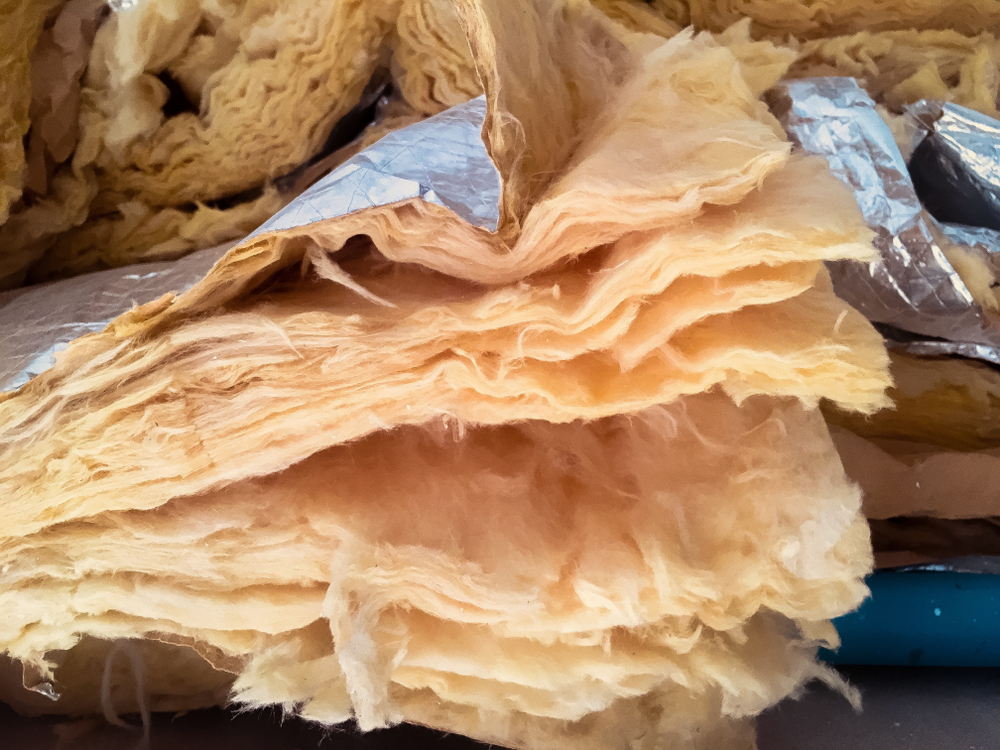
Knowing how to tell the difference between cellulose and asbestos insulation is not just important—it can be critical. Both materials have been used to insulate buildings, but only one poses serious health risks that require specialized handling. The stakes are high, especially when dealing with older buildings where insulation materials may not be easily identifiable. Whether you’re a homeowner, contractor, or real estate professional, understanding the differences between these two substances is essential for safe and informed decision-making.
Visual and Textural Clues
The first step in distinguishing cellulose from asbestos insulation is a basic visual and tactile inspection. Cellulose insulation is typically made from recycled paper products and appears gray or off-white, with a fibrous, fluffy texture. It may contain visible bits of newspaper or cardboard, and sometimes it looks like finely shredded paper. Cellulose is soft and can be easily compacted with your hands, although this should be avoided unless you are certain the material is non-toxic.
Asbestos insulation, on the other hand, may look quite different depending on the form it takes. Loose-fill asbestos insulation is often pebble-like or granular, resembling small white or grayish clumps. Sometimes it has a wool-like texture and may be mixed with other materials. More commonly, asbestos is found in pipe wrap or spray-applied forms that appear chalky, flaky, or brittle. The texture of asbestos-containing materials is usually more rigid or crumbly and may emit dust when disturbed.
While visual inspection can offer initial hints, it’s crucial to note that appearances can be misleading. Some cellulose insulation is treated with fire-retardant chemicals that alter its texture and appearance, making it resemble asbestos more closely. Conversely, certain types of asbestos insulation, especially when aged or mixed with other substances, can mimic the look of cellulose. This is why visual inspection should only be the starting point.
Historical Usage and Context
A building’s age and renovation history can provide valuable clues when trying to determine whether the insulation in question is cellulose or asbestos. Asbestos was commonly used in residential and commercial construction from the early 1900s through the 1980s. It was prized for its fire resistance, durability, and insulating properties. If your home or building was constructed or last insulated during that period, especially prior to 1985, there is a higher chance that the material could contain asbestos.
Cellulose insulation became popular starting in the 1950s but was more widely adopted during the 1970s and 1980s as environmental awareness grew and the dangers of asbestos became more widely known. Modern cellulose is almost entirely asbestos-free and often labeled as eco-friendly or “green” insulation. If your building was insulated or re-insulated after the 1990s, the chances are much higher that the material is cellulose, particularly if it was part of an environmentally conscious renovation.
However, it’s important to remember that buildings often undergo multiple renovations over the decades. You could find newer cellulose insulation installed over older layers of asbestos-containing material. This layering can complicate the identification process and increases the importance of conducting a professional assessment.
Chemical Composition and Behavior
One of the most definitive ways to tell the difference between cellulose and asbestos insulation is through analysis of their chemical composition. Cellulose, being made primarily of plant-based fibers, is organic. It is typically treated with non-toxic borate compounds to improve its fire and insect resistance. Because it’s organic, it also biodegrades over time, especially in damp environments, and may show signs of mildew or mold.
Asbestos, conversely, is a naturally occurring silicate mineral. It does not biodegrade and is extremely resistant to heat and chemical reactions. This resistance is what made it such a popular insulating material. However, it is also what makes asbestos so dangerous: when its microscopic fibers are disturbed and become airborne, they can be inhaled and cause serious health issues such as mesothelioma, lung cancer, and asbestosis.
When exposed to flame, cellulose insulation may char and emit a burning paper smell, while asbestos will not burn but may become brittle. Importantly, conducting a flame test or disturbing the material in any way is highly discouraged unless it is positively identified as non-asbestos. Instead, if there’s any doubt, samples should be collected and tested in a lab under controlled conditions.
Laboratory Testing and Professional Assessment
The only truly reliable way to tell the difference between cellulose and asbestos insulation is through professional testing. Home testing kits are available but can be risky if not handled correctly. They typically involve collecting a small sample of the insulation and sending it to a laboratory that specializes in asbestos identification. The most common tests include Polarized Light Microscopy (PLM) and Transmission Electron Microscopy (TEM), which can detect asbestos fibers at microscopic levels.
Professional asbestos inspectors are trained not only to collect samples safely but also to identify likely hotspots in a building. They wear proper personal protective equipment (PPE), use containment procedures to prevent cross-contamination, and follow legal protocols for hazardous material handling. They will often perform a visual inspection, take air and material samples, and provide a detailed report.
If asbestos is confirmed, the next steps typically involve either encapsulation—sealing the material so it cannot release fibers—or full removal by a licensed abatement contractor. This process can be expensive and time-consuming, but it is essential for the health and safety of occupants. In contrast, cellulose insulation that has become wet or moldy may simply need to be replaced, with far fewer regulatory hurdles involved.
Health and Safety Considerations
Understanding how to tell the difference between cellulose and asbestos insulation is not just an academic exercise—it has direct implications for your health and safety. Asbestos exposure is a serious concern, particularly for those who engage in renovation, demolition, or even simple maintenance activities in older buildings. The latency period for asbestos-related illnesses can be decades, meaning symptoms may not appear until long after exposure.
Cellulose insulation, while far safer, can still present risks if it becomes waterlogged or contaminated with pests. It may harbor mold spores or insects and can lose its insulating effectiveness over time. However, it does not carry the same long-term health risks as asbestos and is considered safe for DIY installation in most cases.
From a regulatory standpoint, asbestos is heavily controlled in most developed countries. Handling it without proper certification can lead to legal penalties. Cellulose, on the other hand, is often used in energy-efficiency upgrades and may qualify for green building credits or tax incentives.
Ultimately, if you suspect that the insulation in your home or building may contain asbestos, do not attempt to remove or disturb it yourself. Contact a certified professional to conduct an assessment. Even if you’re fairly certain it’s cellulose, testing can offer peace of mind and help ensure compliance with local building codes and safety regulations.
Conclusion
By understanding the differences in visual characteristics, historical context, chemical makeup, and safety risks, you can make more informed decisions about how to manage insulation in any building. In the end, the question of how to tell the difference between cellulose and asbestos insulation is best answered through a combination of observation, research, and professional guidance. The health of occupants and the safety of your building depend on it.
Need Insulation Near You?
Since 2001, Ace Insulation Inc. has been your premier insulation experts. We take pride in being locally owned and operated as well as offering high-quality service. We specialize in the installation of insulation. Whether you are building a new home or renovating your existing space, we are the place to call. We have many materials to choose from, including fiberglass and spray foam. If you are looking for high-quality work, call us today to schedule your next consultation!


